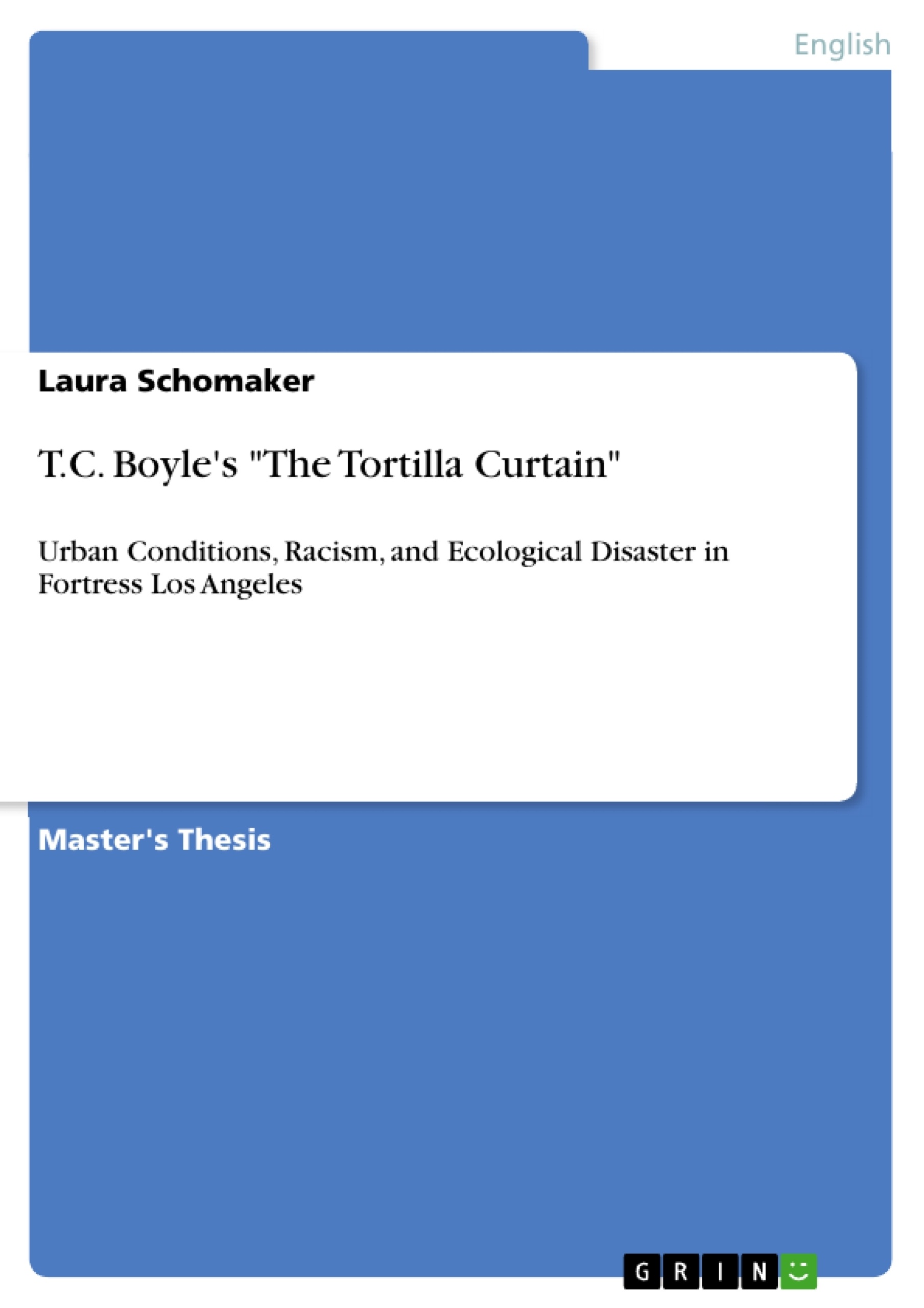Los Angeles, the Californian megalopolis, is famous for its sunny weather, for the Hollywood film studios and for being the residence of the rich and beautiful. And although – or, precisely because – all this is more illusion than reality, the city frequently serves as setting for various pieces of fiction. However, Los Angeles does not only play a huge role in the media, but since lately also in the realm of urban studies. Having long been a kind of ‘outsider’ in the field, it is now regarded as a prototypical example for urban development by the L.A. School. In this context, its image is less sunny and positive, but reveals a deep-rooted racism against Latin-American immigrants in combination with a fortress mentality on the part of its white population as well as a unique urban ecology, in which natural catastrophes seem to be regular occurrences. This paper now intends to outline the significance of Los Angeles in urban studies and trace the thereby acquired findings in a fictional representation of the city: T.C. Boyle’s novel "The Tortilla Curtain". In the process, it is shown how urban conditions, racism and nature, especially in the form of ecological disasters, intersect and influence each other.
All in all, this work brings together urban studies and fiction. Thereby, it examines how "The Tortilla Curtain", as a fictitious representation of Los Angeles, partly reflects the reality of the metropolis as well as urban theory. In this sense, it is concluded that fiction can be an important account of urban problems and their possible solutions and that "The Tortilla Curtain" has therefore a social and a political message.
Table of Contents
- Introduction
- Los Angeles: Basic Facts and Figures
- Los Angeles in Urban Studies
- The L.A. School
- Gates and Walls: The Fortress City
- (The Crossing of) Borders and Boundaries
- L.A.'s Urban Ecology: From Natural Disaster to Environmental Racism
- T.C. Boyle's The Tortilla Curtain
- Arroyo Blanco: The Fortress Community
- (The Crossing of) the Tortilla Curtain
- The Juxtaposition of Man and Animal
- The Apocalyptic Denouement through Ecological Disaster
- Conclusion
Objectives and Key Themes
This paper explores the significance of Los Angeles in urban studies and traces the acquired findings in T.C. Boyle's novel The Tortilla Curtain. It examines how urban conditions, racism and nature, especially in the form of ecological disasters, intersect and influence each other. The main objectives and key themes of this work include:- Examining Los Angeles as a key example in urban studies, particularly focusing on the L.A. School.
- Analyzing Mike Davis's concept of the "fortress city" and its implications for Los Angeles.
- Exploring the complex relationship between borders, boundaries, and racial segregation in Los Angeles.
- Investigating the city's urban ecology, including the impact of environmental racism and natural disasters.
- Tracing how these themes are represented in T.C. Boyle's novel The Tortilla Curtain.
Chapter Summaries
The introduction provides a general overview of Los Angeles as a setting for fiction and its role in urban studies. It highlights the city's complex social and environmental challenges, particularly focusing on racism and ecological disasters.
The second chapter provides basic facts and figures about Los Angeles, covering its population, cultural history, and geographical features. It explores the city's diverse population, its historical development from a Spanish pueblo to an American metropolis, and the prevalence of various languages. This chapter also discusses the city's geographical features, highlighting the surrounding mountain ranges and the San Andreas Fault. The chapter concludes by outlining Los Angeles's economic significance, its role as a major industrial center, and the growing influx of low-wage immigrant labor.
The third chapter examines Los Angeles in the context of urban studies, introducing the theories and conclusions of the L.A. School. It delves into Mike Davis's concept of the "fortress city" and the implications of material and immaterial boundaries in the city. The chapter explores the complex relationship between the US-Mexican border, the "Tortilla Curtain," and the challenges faced by immigrants crossing these boundaries. It also examines the city's urban ecology, analyzing different forms of environmental racism and their relationship to Malthusianism, ecocatastrophes, and animals.
The fourth chapter focuses on T.C. Boyle's novel The Tortilla Curtain, showing how Davis's fortress mentality is reflected in the novel through the exclusive residential community of Arroyo Blanco. It explores the fictional representation of border crossing and immigration in the pursuit of the American Dream, as well as the tangible and intangible walls encountered by newly arrived immigrants in Los Angeles. The chapter also discusses the novel's exploration of racism through the comparison of Latin-American protagonists with animals.
Keywords
This work focuses on key concepts like Los Angeles, urban studies, the L.A. School, "fortress city," borders, boundaries, racial segregation, environmental racism, ecological disasters, and T.C. Boyle's novel The Tortilla Curtain. It examines the relationship between these concepts and their impact on the city's social and environmental landscapes.
- Quote paper
- Laura Schomaker (Author), 2013, T.C. Boyle's "The Tortilla Curtain", Munich, GRIN Verlag, https://www.grin.com/document/231712




